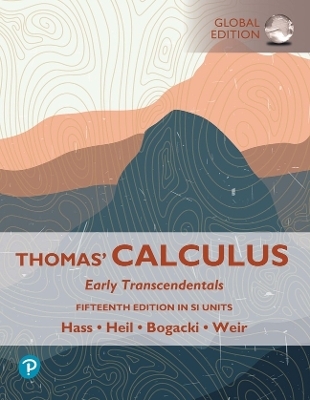
A Second Course in Statistics
Pearson
978-0-13-122810-8 (ISBN)
- Titel erscheint in neuer Auflage
- Artikel merken
For either the second term of a statistics course or for an advanced course in applied regression analysis for students in all disciplines, especially those in business.
This very applied text focuses on building linear statistical models and developing skills for implementing regression analysis in real-life situations. It includes applications for engineering, sociology, psychology, etc., as well as traditional business applications. The authors use material from news articles, magazines, professional journals, and actual consulting problems to illustrate real-world problems and how to solve them using the tools of regression analysis.
Datasets and other resources (where applicable) for this book are available here.
1. A Review of Basic Concepts (Optional)
1.1 Statistics and Data
1.2 Populations, Samples and Random Sampling
1.3 Describing Qualitative Data
1.4 Describing Quantitative Data Graphically
1.5 Describing Quantitative Data Numerically
1.6 The Normal Probability Distribution
1.7 Sampling Distributions and the Central Limit Theorem
1.8 Estimating a Population Mean
1.9 Testing a Hypothesis about a Population mean
1.10 Inferences about the Difference Between Two Population Means
1.11 Comparing Two Population Variances
2. Introduction to Regression Analysis
2.1 Modeling a Response
2.2 overview of Regression Analysis
2.3 Regression Applications
2.4 Collecting the Data for Regression
3. Simple Linear Regression
3.1 Introduction
3.2 The Straight-Line Probabilistic Model
3.3 Fitting the Model: The Method of Least-Squares
3.4 Model Assumptions
3.5 An Estimator of s2
3.6 Assessing the Utility of the Model: Making Inferences About the Slope ß1
3.7 The Coefficient of Correlation
3.8 The Coefficient of Determination
3.9 Using the Model for Estimation and Prediction
3.10 A Complete Example
3.11 Regression Through the Origin (Optional)
3.12 A Summary of the Steps to Follow in a Simple Linear Regression Analysis
4. Multiple Regression Models
4.1 General Form of a Multiple Regression Model
4.2 Model Assumptions
4.3 A First-Order Model with Quantitative Predictors
4.4 Fitting the Model: The Method of Least Squares
4.5 Estimation of s2 , the variance of e
4.6 Inferences about the ß parameters
4.7 The Multiple Coefficient of Determination, R2
4.8 Testing the Utility of a Model: The Analysis of Variance F test
4.9 An Interaction Model with Quantitative Predictors
4.10 A Quadratic (Second-Order) Model with a Quantitative Predictor
4.11 Using the model for Estimation and Prediction
4.12 More Complex Multiple Regression Models (Optional)
4.13 A Test for Comparing Nested Models
4.14 A Complete Example
4.15 A Summary of the Steps to Follow in a Multiple Regression Analysis
5. Model Building
5.1 Introduction: Why Model Building is Important
5.2 The Two Types of independent Variables: Quantitative and Qualitative
5.3 Models with a Single Quantitative Independent Variable
5.4 First-Order Models with Two or More Quantitative Independent Variables
5.5. Second-Order Models with Two or More Quantitative Independent Variables
5.6 Coding Quantitative Independent Variables (Optional)
5.7 Models with One Qualitative Independent Variable
5.8 Models with Two Qualitative Independent Variables
5.9 Models with Three or more Qualitative Independent Variables
5.10 Models with Both Quantitative and Qualitative Independent Variables
5.11 External Model Validation (Optional)
5.12 Model Building: An Example
6. Variable Screening Methods
6.1 Introduction: Why Use a Variable Screening Method?
6.2 Stepwise Regression
6.3 All-Posssible-Regressions Selection Procedure
6.4 Caveats
7. Some Regression Pitfalls
7.1 Introduction
7.2 Observational DataVersus Designed Experiments
7.3 Deviating from the Assumptions
7.4 Parameter Estimability and Interpretation
7.5 Multicollinearity
7.6 Extrapolation: Predicting Outside the Experimental Region
7.7 Data Transformations
8. Residual Analysis
8.1 Introduction
8.2 Plotting Residuals and Detecting Lack of Fit
8.3 Detecting Unequal Variances
8.4 Checking the Normality Assumption
8.5 Detecting Outliers and Identifying Influential Observations
8.6 Detecting Residual Correlation: The Durbin-Watson Test
9. Special Topics in Regression (Optional)
9.1 Introduction
9.2 Piecewise Linear Regression
9.3 Inverse Prediction
9.4 Weighted Least Squares
9.5 Modeling Qualitative Dependent Variable
9.6 Logistic Regression
9.7 Ridge Regression
9.8 Robust Regression
9.9 Nonparametric Regression Models
10. Introduction to Time Series Modeling and Forecasting
10.1 What is a Time Series?
10.2 Time Series Components
10.3 Forecasting using Smoothing Techniques (Optional)
10.4 Forecasting: The Regression Approach
10.5 Autocorrelation and Autoregressive Error Models
10.6 Other Models for Autocorrelated Errors (Optional)
10.7 Constructing Time Series Models
10.8 Fitting Time Series Models With Autoregressive Errors
10.9 Forecasting with Time Series Autoregressive Models
10.10 Seasonal Time Series Models: An Example
10.11 Forecasting Using Lagged Values of the Dependent Variable (Optional)
11. Principles of Experimental Design
11.1 Introduction
11.2 Experimental Design Terminology
11.3 Controlling the Information in an Experiment
11.4 Noise-Reducing Designs
11.5 Volume-Increasing Designs
11.6 Selecting the Sample Size
11.7 The Importance of Randomization
12. The Analysis of Variance for Designed Experiments
12.1 Introduction
12.2 The Logic Behind Analysis of Variance
12.3. One-Factor Completely Randomized Designs
12.4 Randomized Block Designs
12.5 Two-Factor Factorial Experiments
12.6 More Complex Factorial Designs (Optional)
12.7 Follow up Analysis: Tukey’s Multiple Comparisons of Means
12.8 Other Multiple Comparisons Methods (Optional)
12.9 Checking ANOVA Assumptions
13. CASE STUDY: Modeling the Sale Prices of Residential Properties in Four Neighborhoods
13.1 The Problem
13.2 The Data
13.3 The Theoretical Model
13.4 The Hypothesized Regression Models
13.5 Model Comparisons
13.6 Interpreting the Prediction Equation
13.7 Predicting the Sale Price of a Property
13.8 Conclusions
14. CASE STUDY: An Analysis of Rain Levels in California
14.1 The Problem
14.2 The Data
14.3 A Model for Average Annual Precipitation
14.4 A Residual Analysis of the Model
14.5 Adjustments to the Model
14.6 Conclusions
15. CASE STUDY: Reluctance to Transmit Bad News: the MUM Effect
15.1 The Problem
15.2 The Design
15.3 Analysis of Variance Models and Results
15.4 Follow up Analysis
15.5 Conclusions
16. CASE STUDY: An Investigation of Factors Affecting the Sale Price of Condominium Units Sold at Public Auction
16.1 The Problem
16.2 The Data
16.3 The Models
16.4 The Regression Analyses
16.5 An Analysis of the Residuals form Model 3
16.6 What the Model 3 Regression Analysis Tells Us
16.7 Comparing the Mean Sale Price for Two Types of Units (Optional)
16.8 Conclusions
17. CASE STUDY: Modeling Daily Peak Electricity Demands
17.1 The Problem
17.2 The Data
17.3 The Models
17.4 The Regression and Autoregression Analyses
17.5 Forecasting Daily Peak Electricity Demand
17.6 Conclusions
Appendix A: The Mechanics of a Multiple Regression Analysis.
Appendix B: A Procedure for Inverting a Matrix.
Appendix C: Statistical Tables.
Appendix D: SAS for Windows Tutorial.
Appendix E: SPSS for Windows Tutorial.
Appendix F: MINITAB for Windows Tutorial.
Appendix G: Sealed Bid Data for Fixed and Competitive Highway Construction Contracts.
Appendix H: Real Estate Appraisals and Sales Data for Six Neighborhoods in Tampa, Florida.
Appendix I: Condominium Sales Data.
Answers to Odd-Numbered Exercises.
Index.
| Erscheint lt. Verlag | 14.8.2003 |
|---|---|
| Sprache | englisch |
| Maße | 235 x 204 mm |
| Gewicht | 1472 g |
| Themenwelt | Mathematik / Informatik ► Mathematik ► Analysis |
| Mathematik / Informatik ► Mathematik ► Finanz- / Wirtschaftsmathematik | |
| Mathematik / Informatik ► Mathematik ► Statistik | |
| ISBN-10 | 0-13-122810-2 / 0131228102 |
| ISBN-13 | 978-0-13-122810-8 / 9780131228108 |
| Zustand | Neuware |
| Haben Sie eine Frage zum Produkt? |
aus dem Bereich


